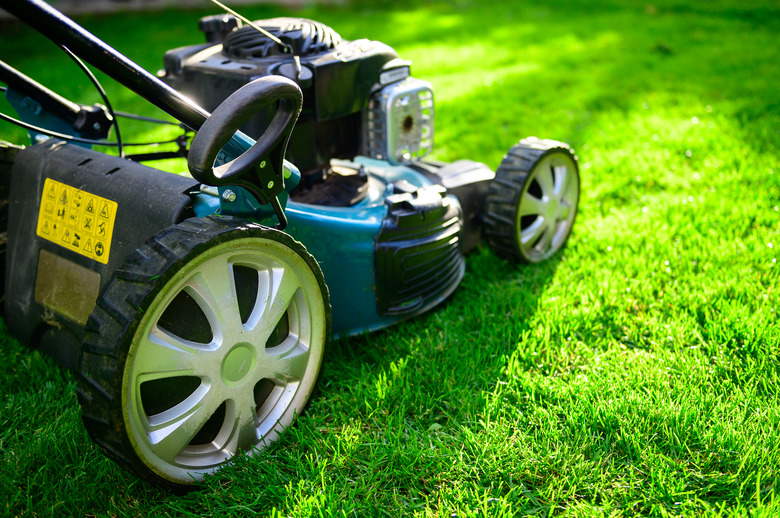Should I Mow Grass Before Fertilizing?
Lawns that are mowed and fertilized on a regular basis grow vigorously and cover the yard in a thick blanket of green, while lawns that are not cared for tend to become thin, weed-infested blots on the landscape. Though there are no hard, fast rules to lawn care, as a general rule, the grass should be mowed first, then fertilized; this removes excess lawn waste and exposes the soil, which helps the fertilizer work more efficiently.
Tip
Generally, experts recommend first mowing, then fertilizing, a lawn. This helps expose the soil so the fertilizer can penetrate. Fertilize in September for cool-season grasses and in May or early June for warm-season varieties.
Grass Nutritional Needs
Grass Nutritional Needs
During phases of active growth, lawns need plenty of nitrogen. These periods of development vary from one type of grass to another; cool-season grasses multiply rapidly during the early spring and autumn, while warm-season grasses are most active during the summer.
Nitrogen is water-soluble, and while it is normally present in the soil, it does tend to be in short supply, as it is easily leached by irrigation and rainfall. Grasses also need potassium and phosphorus, but these nutrients are usually supplied by the surrounding soil.
The best practice is to take a soil test, so you know. Assuming the common need for nitrogen, experts recommend about 1 pound of nitrogen per 1,000 square feet; this requires knowledge of the fertilizer's nitrogen content, identified as the first number identifying the level of nitrogen, phosphorus and potassium. So, for instance, a figure of 20-5-10 identifies a fertilizer as having 20 percent nitrogen per weight, 5 percent phosphorus and 10 percent potassium.
Fertilizer Choices for Lawns
Fertilizer Choices for Lawns
To give the lawn a quick boost, apply an inorganic fertilizer that uses ammonium sulfate, urea or ammonium nitrate, as these water-soluble forms of nitrogen are easily taken up by plant roots.
For slow, even lawn growth, choose an organic fertilizer or one that uses water-insoluble forms of nitrogen, such as urea-formaldehyde or sulfur-coated urea. These fertilizers break down slowly, providing the lawn with an ongoing supply of vital nutrients. Several companies manufacture fertilizer that's specific to certain types of grasses or certain times of the year.
Applying Lawn Fertilizer
Applying Lawn Fertilizer
Mow the lawn to a height of 1 to 2 inches, depending on the type of turfgrass you have and the time of year, then use a rake to remove the clippings and debris. Apply the fertilizer according to the package directions. If no directions are available, use approximately 1 pound of actual nitrogen for every 1,000 square feet of lawn.
Do not mow the lawn again until the fertilizer has been properly watered in, either through artificial irrigation or natural rainfall, and do not reapply the fertilizer for at least six weeks.
Lawns With Brown Grass
Lawns With Brown Grass
When the lawn turns brown in response to dry summer weather, do not worry. Many grasses naturally go dormant during periods of drought. They will green up when the rain arrives.
Do not mow the grass until it turns green again; leaving the grass intact will help protect the roots from the scorching effects of the summer sun. Additionally, do not add extra fertilizer in an attempt to turn the grass green. Too much fertilizer can chemically burn the lawn, which only makes it look worse.
